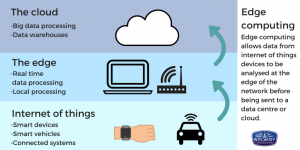Juniper Research, founded in 2001, provide research, forecasting and consultancy in technology markets to a worldwide client base. As part of their role as specialists in identifying disruption and change in the digital market, they have revealed the top ten tech trends that will impact the digital market in 2019. In reverse order:
10. Chatbots to play central role in insurance claims process
As a data driven industry, Chatbots are ideally placed to help insurance firms in automating the claims process. They can offer personalised answers and reduce response times for customers. AI-programmed bots can even identify trends and conduct repeated actions against specific claims. 2019 is the year Juniper predict chatbots will be fully adopted within this industry.
9. Loot boxes to be banned across Europe and North America 
Loot boxes are a device used in gaming whereby players voluntarily pay for ‘loot’ to give them a chance of receiving prizes that will potentially help them in the game. However there is no guarantee that the box will contain anything of value, drawing a thin line between gambling and gaming, especially for minors. Although they do not qualify as gambling under current British law, Juniper predict that these lucrative loot boxes will be banned in 2019 and gaming companies will need to find alternative sources of income.
8. Blockchain moves into the food chain
Blockchain technology provides a shared digital ‘ledger’ where the path of goods can be traced with a record of every transaction. In today’s global marketplace it speeds up transactions, reduces overhead costs, ensures provenance and offers security against fraudulent activity as it provides a permanent record of everyone’s actions and no one person has control over the chain. In 2019, Juniper predict this technology will be fully adopted by the food industry in order for them to become fully transparent and confident in their sources, for both consumers (ultimately in the form of apps) and regulators.
7. Automotive OEMs to disrupt established business models
Original Equipment Manufacturers (OEMs) are companies that may sell under their own brand but also manufacture for other companies. (For example Foxconn, a Taiwanese electronics company, is the largest OEM in the world producing parts for Apple, Dell, Google, Huawei, Nintendo, etc). Juniper predict that automotive OEMs will be transitioning away from vehicle manufacturing towards becoming Mobility-as-a-Service (MaaS) providers as the launch of 5G in 2019 presents opportunities for autonomous vehicles and services to become a reality.
6. Voice assistants become a service-led market
Voice is an ideal platform for the delivery of digital services and has been rapidly adopted already. Juniper predict that the Alexa and Echo brands will become more distinct and other vendors will enter the market differentiating their products through software and services.
5. Robotic Process Automation (RPA) ramps up
RPA is an emerging form of business process automation technology based on software robots or artificial intelligence (AI). RPA systems develop an action list by watching a user perform tasks in an application’s graphical user interface (GUI), and then perform the automation by repeating those tasks directly in the GUI. Developments in AI have greatly improved the efficiency of RPA services in the last 12 months and Juniper predicts that RPA will be rapidly adopted in 2019, particularly by financial institutions.
4. RCS Messaging to contest chatbots & OTT* business platforms
RCS (Rich Communication Services) is the successor to SMS (Short Message Service) text messaging. The RCS protocol utilises the best of Facebook Messenger, iMessage and WhatsApp; features include starting group chats, sending videos and audio messages, sending high resolutions images, receiving read receipts in real time, and it will rely on data rather than cellular connection. Juniper predict a large uptake in smartphones utilising this technology in 2019.
*OTT (Over the top) –content providers that distribute media content directly over the internet such as Netflix
3. Banking-as-a-Service economy emerges
APIs (Application Programming Interfaces) enable ease of communication across different platforms; interaction is made via API rather than engaging with the whole remote server. The Payment Services Directive is an EU directive stipulating that EU banks must produce APIs to allow third party access to financial data. On the back of this, Juniper predict that API-based banking will be a large growth area as banks strive to be competitive and financial products become more flexible for consumers.
2. AI to enhance EDGE computing power in IoT systems 
Edge computing is where computation takes place on distributed devices rather than in a centralized cloud environment and is essential for the inter-connectivity between devices known as the Internet of things (IoT); vehicles and home appliances that contain electronics and software which allows these things to connect and exchange data. Increasing the efficiency of IoT systems by capturing and analysing data on the go will lead to insightful data for businesses, and Juniper predict that security will increase simultaneously as businesses reprogramme algorithms frequently to protect against viruses and vulnerabilities such as malware.
1. Adversarial machine learning becomes key for security & fraud prevention
Adversarial machine learning is a research field which aims to enable the safe adoption of machine learning techniques in adversarial settings, such as spam filtering, malware detection and biometric recognition. For example, countering attacks to spam filtering where spam messages are obfuscated through the misspelling of ‘bad’ words or the insertion of ‘good’ words. Fraudulent activity is outpacing commercial activity and Juniper predict that as industries increasingly adopt machine learning algorithms into their processes, the security of these algorithms will become a priority.
View more of Juniper’s research here:
https://www.juniperresearch.com/








